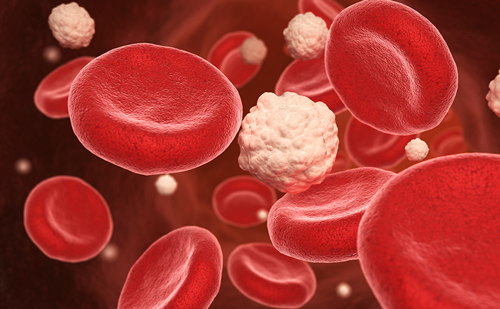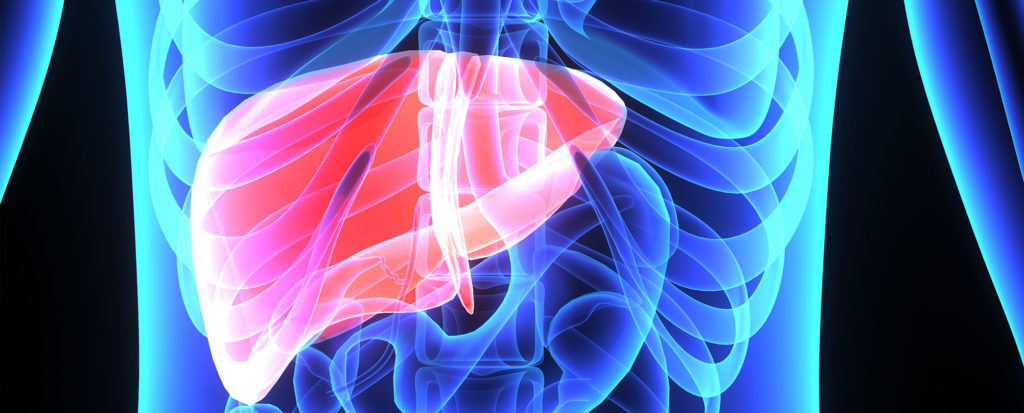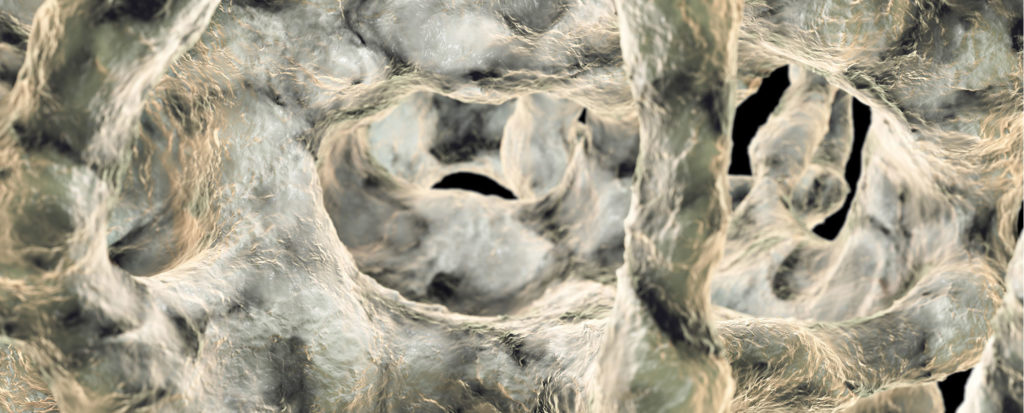‘Palaeolithic’ refers to the period of history of the genus Homo, beginning more than 2 million years ago when humans began to cultivate plants (predominantly cereal grains) and domesticate animals. They lived as hunter-gatherers, eating wild-animal-sourced foods (lean meats, internal organs, bone marrow, but no dairy) and uncultivated plant-sourced foods (mostly fruits, non-grain, vegetables, nuts, but no legumes).1
The Palaeolithic diet is an eating plan that emphasises natural environmental foods and eliminates grains, legumes and most processed foods. There is also a strong focus on lifestyle practices, the environmental impact of food choices and total body wellness within the framework of the Palaeolithic philosophy. Eventually, this diet will better support the natural biological function of our bodies, improving digestion and health. The diet is re-emerging for its significant health benefits; however, the evidence for this is believed to be in short supply.2,3
Diabetes and obesity (diabesity) have become a global pandemic of the 21st century and is especially a scourge in the developing world.4,5 India constitutes the leading diabetes country of the world with the highest global annual rates of prediabetes progression to diabetes (18% per annum compared to 11%, 6% and 2.5% in China, Finland and the USA, respectively).6,7 The aim of this review is to summarise the currently available literature on the possible benefits of a Palaeolithic diet in managing diabetes and obesity, with a focus on the vegan perspective. The role of a Palaeolithic diet in other endocrinopathies is also evaluated.
Ideology
The Palaeolithic diet – sometimes referred to as ‘the caveman diet’ – is based on the principle that eating foods that were available to early humans will promote optimal health and prevent various disease conditions. One of the fundamental theories behind this diet is that modern food systems, production and processing techniques are damaging to human health.8
Peter S Ungar, a Palaeontologist at the University of Arkansas, focusses on diet and feeding adaptations in living and fossil primates. He and his team suggested that chronic degenerative diseases might be due to a mismatch between our diets and the fuels our bodies were ‘designed’ to burn.9
With a theoretical belief that each species is genetically adapted to thrive on the diet eaten by its ancestors (low carbohydrate and high fat), it is believed – although with little emerging evidence – that human beings may sustain improved health outcomes when they eat similarly to their ancestors, in terms of the ratio of macronutrients and micronutrients (Figure 1).10

Variants of the Palaeolithic diet
80/20 Palaeolithic diet
As the term implies, the 80/20 diet allows that approximately 80–90% of the time over 1 week one can indulge in non-Palaeolithic foods; however, for the rest of the time (10–20%) one has to strictly follow a Palaeolithic diet plan. The resulting less strict diet regimen would result in better overall compliance of the meal plans, at the cost of reduced overall benefits of the Palaeolithic diet.11,12
Autoimmune Palaeolithic diet
The autoimmune Palaeolithic diet is a specialised version of the Palaeolithic diet to help people improve digestion, reduce inflammation in the body, treat gut dysbiosis and leaky gut, and restore healthy diversity, gut microorganisms and barrier function of the gut.13 Eventually, it may help relieve symptoms of autoimmune disorders (such as fibromyalgia, rheumatoid arthritis, lupus, multiple sclerosis, inflammatory bowel disease, Crohn disease, eczema, etc.).14 It must be highlighted that the evidence of the above observations is not strong as they have come from small studies and anecdotal reports. There is an urgent need for randomised controlled trials (RCTs) on the same. Initially, it may benefit people starting out on the Palaeolithic diet and dealing with disease, poor digestion, or inflammation. Despite the autoimmune Palaeolithic diet’s greater focus on nutrient density (focussing on micronutrients to correct both deficiencies and imbalances, which heal damaged tissues, support regulation of the immune system, hormone systems, detoxification systems and neurotransmitter production), it further restricts the guidelines on certain foods – such as nightshade vegetables (including potatoes, tomatoes, and peppers), fruits, nuts and eggs – to be eliminated as they create inflammatory responses and are considered to be gut irritants.13 Hence, the autoimmune Palaeolithic diet diet may be extremely challenging to follow for an extended period of time as the only food choices left are animal protein and vegetables.
Primal/lacto-Palaeolithic diet
The primal/lacto Palaeolithic is a traditional version of the Palaeolithic diet, but allows more flexibility in food choices. It permits the consumption of organic, grass-fed, whole/full-fat dairy products, lots of vegetables, protein, fermented soy products, healthy fats, soaked or sprouted grains and occasionally some legumes, while eliminating gluten and artificial sweeteners. Other than that, it recommends the same principles of the Palaeolithic diet in promoting whole foods and minimum carbohydrates, with the majority of calories coming from organic proteins and fats alongside vegetables, unprocessed and locally sourced food items. The overall concept of such a diet is nutritionally enhanced by including excellent sources of protein, calcium and healthy fats for optimal hormonal function.15
Palaeolithic ketogenic diet
The Palaeolithic ketogenic diet is a modified version of the classic ketogenic diet, with a fat:protein ratio of nearly 2:1. The concept is that the diet combines the advantages of the Palaeolithic diet and the classic the ketogenic diet, helping to lower the body’s demand for insulin.16 This is designed to get the body into a state of physiologic ketosis, where fat is the primary fuel for energy instead of glucose. Insulin is not necessary for ketone metabolism by cells; hence, this switch in energy metabolism may lead to a drop in insulin levels and insulin resistance.1 A reduction in anabolic hormone insulin levels promotes weight loss. Therefore, such a diet plan primarily benefits people with obesity, diabetes and diabesity. The ketogenic diet has been in vogue for refractory epilepsy for nearly a century now.17 It has shown to be beneficial for Crohn’s disease in reversing the cluster of symptoms and abnormalities associated with the disease.16,18 Furthermore, a case report published by Clemens et al.16 has shown that The Palaeolithic ketogenic diet is effective, safe and feasible in the treatment of childhood absence epilepsy. It may result in a rapid decrease of absence seizures, improved behaviour and developmental gains.
Palaeolithic diet versus ketogenic diet
The Palaeolithic diet and ketogenic diets allow the consumption of healthy fats, animal proteins and leafy greens, while drastically minimising carbohydrates intake by avoiding fruits and starchier vegetables. The Palaeolithic diet and ketogenic diets resemble some of the food restrictions but their ideology is uncommon to serve different physiological effects in the human body. This is because the ketogenic diet intends to create a state of ketoacidosis in the body, which does not happen in the Palaeolithic diet. This “physiologic ketosis” happens only when the diet is virtually devoid of carbohydrates as happens in the ketogenic diet (<5% carbohydrate). Both the benefits as well as the limitations of the ketogenic diet is due to this altered physiologic state of ketoacidosis.
Both diets prefer non-vegan food sources but can be modified for vegan sources as well. Healthy options can be planned depending on how they are implemented and what they are used for. Both diets can be planned nutritiously. The basic difference lies in the fact that the Palaeolithic diet focuses more on ideology while the ketogenic diet focusses on macronutrients. The Palaeolithic diet encourages exercise and mindfulness, but does not put limitations on macronutrients, while the ketogenic diet comparatively sets the quantity of macronutrients – especially carbohydrates – to be consumed throughout the day. Further, the ketogenic diet encourages the consumption of high-fat dairy foods and some soy, while the Palaeolithic diet restricts most of the dairy products and soy.16
Pegan diet
The ‘Pegan’ diet is a shortened form of ‘Palaeo vegan’; as the name suggests, this is a a Palaeolithic diet that excludes all animal-based foods and is completely vegan. While the basic Palaeolithic diet is based on the health-supportive benefits of animal products, this version focusses on plant-based protein, fats and produce, and is primarily designed for people who feel principally or religiously opposed to eating animals.19 A Pegan diet plan may be especially relevant for certain parts of India that have a significantly vegan population.
Dietary and meal patterns
The Palaeolithic diet excludes added sugars, preservatives and other chemicals often found in grains, legumes, most sources of dairy, some nuts and other refined food products, such as gluten, lectins and phytic acid. It promotes the consumption of whole foods, meat and fish, eggs, nuts and seeds, fruits, vegetables, selected fats and oils (e.g. coconut oil, olive oil, avocado oil, lard, tallow, ghee/butter) and minimally processed sweeteners (e.g. raw honey, maple syrup, coconut sugar, raw stevia). The sample menu options for vegan and non-vegan food items are discussed in Table 1.

Nutritional aspect
The Palaeolithic diet is predominantly non-vegan, constituting low carbohydrates, lean protein of 30–35% daily caloric intake, in addition to a fibre diet from non-cereal, plant-based sources, up to 45–100 g daily.20 While planning for the vegan version of basic Palaeolithic diet, the diet becomes nutritionally unbalanced and disproportionate in terms of macronutrients as the major sources of carbohydrates and protein rely upon nuts, fruits and sugar instead of the staple sources of cereals, pulses and milk or milk products. Considering the importance of a balanced proportion of macronutrients for various physiological functions in the human body, and the dominant health benefits of this diet, it can prove to be medically beneficial if followed for a certain period of time. It has high-fibre content, high antioxidants, high mono- and polyunsaturated fats, low sodium and high potassium that may be beneficial for human health.21,22 The Palaeolithic diet promotes the consumption of:
- meat and poultry (including beef, lamb, chicken, turkey, pork
[among others]); - fish and seafood (including salmon, trout, haddock, shrimp, shellfish)
- eggs
- vegetables (including lettuce, broccoli, spinach, kale, peppers, onions, carrots, tomatoes, etc.);
- fruits (including apples, bananas, oranges, pears, avocados, strawberries, blueberries);
- nuts and seeds (including almonds, macadamia nuts, walnuts, hazelnuts, sunflower seeds, pumpkin seeds);
- healthy fats and oils (including extra virgin olive oil, coconut oil, almond butter, avocado oil); and
- spices including garlic, turmeric, rosemary, parsley).
Further to promoting human health, the Palaeolithic diet restricts unhealthy foodstuffs (e.g. sugary sodas, pastries, cookies, crackers, bread and ice-cream).23
The Palaeolithic diet also restricts non-nutritious food items:
- sugar and high-fructose corn syrup (including soft drinks, fruit juices, table sugar, candy, pastries, ice cream, etc.);
- trans fats (e.g. those found in margarine and various processed foods);
- foods containing ‘hydrogenated’ or ‘partially hydrogenated’ oils; and
- artificial sweeteners and highly processed foods containing additives.
The Palaeolithic diet is regarded as comparatively providing more satiety per calorie, possibly owing to significantly higher relative intake of protein and fibre, and decreased leptin levels resulting in changes in weight and waist circumference.24
The ill-effects of the diet may emerge when it restricts the consumption of many healthy food items:
- grains including wheat, spelt, rye, barley, etc.;
- legumes including beans, lentils, dairy – especially low-fat – (primal/lacto Palaeolithic may include full-fat dairy, e.g. butter and cheese); and
- some vegetable oils (e.g. as soybean, sunflower, cottonseed, corn, grapeseed, safflower, etc.).
It becomes quite difficult to plan balanced meals for vegans after restricting the major food groups of their diets. It may cause nutrient deficiencies and low energy. Also, the increased promotion of protein-rich food items without enough consumption of hydrating foods – such as vegetables, fresh fruits and water – may ‘dry out’ the digestive system, leaving out hydrating fibre to ‘push’ food through the gut. Additionally, nuts and seeds are staple ingredients for most Palaeolithic diet menus (including almond butter, almonds, pistachios, cashew butter, almond flour bread, almond flour pizza crust, almond flour crackers, etc.), which may cause constipation and other cardiovascular risks when taken in excess amounts.
Beneficial health impacts
A systematic review and meta-analysis – along with the evidence from short-term studies conducted so far on the consumption of the Palaeolithic diet – clinically supports its beneficial effects on metabolic syndrome, improved blood pressure and glucose tolerance, decreased insulin secretion, increased insulin sensitivity, improved lipid profiles, cardiovascular risk factors without weight loss in healthy sedentary humans,25–27 and improved glucose control in people with type 2 diabetes mellitus (T2DM) when compared with a conventional diet containing moderate salt intake, low-fat dairy, whole grains and legumes.22,28,29 The potential mechanisms and health benefits are shown in Figure 1.25–30
The Palaeolithic diet is the foundation of the treatment for obesity- and T2DM-related non-alcoholic fatty liver disease (NAFLD). It improves insulin resistance, ameliorates dyslipidaemia, reduces hypertension and may reduce the risk of age-related diseases.30 Further beneficial factors with respect to metabolic syndrome among normal healthy people are decreased energy intake with eventual improvements in body weight, body mass index, waist circumference and plasminogen activator inhibitor-1.30
Palaeolithic diet and weight loss
The possible mechanism for weight loss with the Palaeolithic diet is through a reduction in insulin resistance. This happens because Palaeolithiclithic nutrition is virtually devoid of high-glycaemic-index carbohydrates and it exclusively comprises non-processed foods. The food processing procedure introduces massive amounts of simple carbohydrates resulting in increased insulin resistance, hyperglycaemia and other metabolic anomalies.26,31,32 Hence the Palaeolithic diet strictly avoids processed and refined food items. A RCT conducted by Otten et al.,32 assessed the effects of the Palaeolithic diet among people with T2DM for 12 weeks. There was a decrease in fat mass by 5.7 kg (interquartile range [IQR]: -6.6, -4.1; p<0.001) and 6.7 kg (-8.2, -5.3; p<0.001); decrease in HbA1c by 0.9% (-1.2, -0.6; p<0.001) and 1.1% (-1.7, -0.7; p<0.01); decreased serum leptin by 62% (p<0.001) and 42% (p<0.001) among the subjects with and without supervised exercise, respectively. Another RCT conducted by Jönsson et al.32 has shown that the Palaeolithic diet resulted in greater satiety quotients for energy per meal (p=0.004), energy density per meal (p=0.01) and glycaemic load per meal (p=0.02) among subjects with T2DM with negative effect with respect to compliance. Along with the above mentioned benefits implicated among obese patients with T2DM, a study by Masharani et al.21 also showed a marked decline in fructosamine and triglyceride values among the same group.
Such diets are believed to be beneficial for the prevention and treatment of NAFLD and associated conditions.30 They are associated with a lower risk of all-cause, cardiovascular-specific, cancer-specific and other non-injury or accident-specific mortality.34 A significant and persistent effect on liver fat reduction is evident, owing to food quality; for example, a higher content of mono- and polyunsaturated fatty acids in such diets.35 The limited evidence further supports that such diets may be associated with lower levels of systemic inflammation and oxidative stress in humans.36 Furthermore, such diets have also shown dietary enhanced effects on inflammatory bowel disease.20 The effects have been expanded for the treatment of acne as well, and it is aptly called the ‘anti-acne diet’.37
Potential concerns with the Palaeolithic diet
Medically, Palaeolithic nutrition has been criticised for being too low in calcium intake, thus having an adverse impact on bone health. Further the relatively increased magnesium intake, may further compromise calcium homeostasis.26 An intervention study conducted by Genoni et al.38 reported a significantly greater number of diarrhoea events in those adhering to a Palaeolithic diet, along with increased costs associated with grocery shopping, and a belief that the diet was not healthy. These factors may result in inefficient use of the Palaeolithic diet in clinical settings. Also, the planning of optimally nutritionally balanced Palaeolithic diets may be challenging, specifically for vegans. Furthermore, the compliance of such a diet is questionable despite the low evidence of proposed potential mechanisms associated with its health impacts.
Among people with diabetes, a combination of insulin administration and low-carbohydrate diets is known to increase the risk of hypoglycaemia.39 This is because low-carbohydrate diets (the Palaeolithic diet and ketogenic diet among others) are associated with reduced calorie intake and weight loss, resulting in a reduction in insulin resistance. Hence, whenever a patient with T2DM is considering initiating such diets, it should always be done under medical supervision with the appropriate adjustment in diabetes medications (insulin secretagogues and insulin) to reduce the risk of hypoglycaemia.40 The authors’ personal observation is that when patients with T2DM are able to strictly follow Palaeolithic diet plans for a prolonged period of time, a number of them were able to either discontinue oral anti-diabetic medications completely, or reduce their reliance on such medications by 50%.
With the emerging field of medical diets, planning and implementation to assess their health impact has become an indispensable part of medical nutrition therapy. Various diets (e.g. the ketogenic diet and the Atkins diet) have been popularised in the clinical management of disease conditions. The Atkin’s diet is also a low-carbohydrate diet, with high protein and moderate fat. However, Atkin’s diet gradually increases the amount of carbohydrates with the preference of complex carbohydrates, plant-based protein sources and a mix of healthy saturated and unsaturated fats. Contextually, Table 2 summarises the updates of the diets still struggling with a paucity of evidence in clinical research.16,40–42
Conclusion
While the evidence is limited, the Palaeolithic diet has shown potential to prevent and manage various health conditions. It has a major role in managing the diabesity pandemic. Good palatability and acceptance are big plus points for the Palaeolithic diet; therefore, long-term compliance is also better. The diet can be planned and the patient counselled judiciously to enhance his/her compliance; however, the potential mechanisms behind the diet still require exploration. There is an urgent need for RCTs to evaluate the role of the Palaeolithic diet with different anti-diabetes medications for glycaemic control and the reversal of T2DM.















